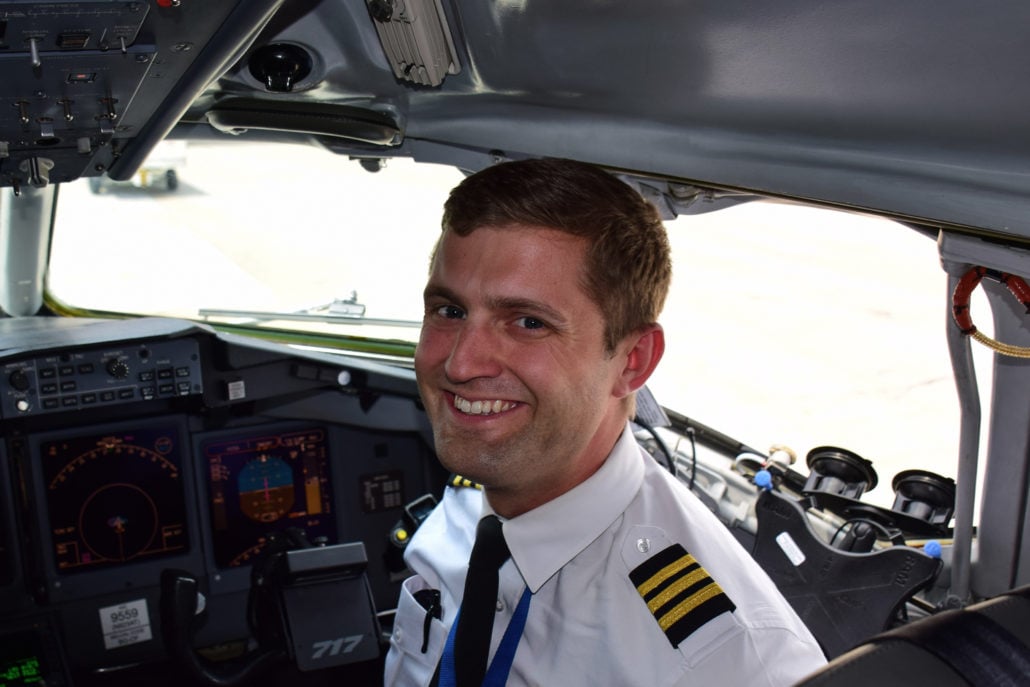
In our Ask a Pilot series, pilot Spencer Marker answers one of your aviation-related questions each week. See past installments here and submit your own to whitney@johnnyjet.com.
The question
What kind of training do pilots have to complete on a yearly basis?
—Mark
The answer
Hey there, Mark. In addition to our primary flight training (which you can read about here) and our airline-specific initial training, pilots have to complete yearly recurrent training in order to keep our skills sharp. This training includes several different mediums but primarily, it can be broken down into two categories: ground training and simulator training.
Ground training
On FAA-approved intervals (quarterly, bi-yearly or yearly), pilots must accomplish some form of ground school training. Think of this as classroom textbook-type work. Historically, pilots had to attend a multi-day recurrent ground school at their airline’s headquarters. During this time, pilots reviewed airplane systems, airline procedures and safety equipment usage among other things (including extinguishing a real fire).
While we still have to travel to refresh our skills with safety equipment like fire extinguishers, most airplane systems training is now accomplished using Computer Based Training, or CBTs. These allow the pilot to accomplish their recurrent ground training during their time at home, reducing the need for classroom instruction.
This ground training sets a framework for where pilot’s skills are really put to the test: the simulator.
Simulator training
Before I continue, I should explain what exactly a simulator is. Simulators are huge, computer-based training devices that mimic an actual aircraft flight deck. They are generally white, cube-shaped boxes mounted on large hydraulic rams to simulate movement in flight (click here for a more in-depth view of what a simulator looks like). Inside this white box is an exact replica of an airplane’s cockpit (down to every single switch), wrap-around visual display, and room for an instructor and observer. Everything is designed to almost exactly match the look, feel and sensations you would get inside an actual aircraft.
During our scheduled simulator training, pilots will generally accomplish a Proficiency Check (PC) or Line-Oriented Flight Training (LOFT). And these two scenarios offer pilots the chance to practice and demonstrate their skills in different ways.
During a PC, pilots are given a series of demonstration tasks to accomplish. Most involve abnormal or emergency procedures and come in fairly rapid succession. Essentially once one task has been demonstrated for the check pilot (the pilot evaluating you), they then move on to the next.
The goal of a PC is to evaluate a pilot’s ability to accomplish procedures and handle a situation correctly should an emergency arise. Evaluators are given a list of tasks to accomplish and grade the pilot on their performance. Pilots are very busy during these sessions.
LOFT training is different, as it is designed to closely simulate a flight you would conduct in day-to-day operations. This means that pilots accomplish every single thing they would do normally, right down to the pre-departure announcements. The “flight” is then accomplished exactly the way it would be on the line. Pushback, taxi, takeoff, and climb are all completed normally.
However, a LOFT flight isn’t designed to go smoothly. At some point, pilots will encounter an issue. It could be a minor problem or it could be something requiring immediate action. From this point, pilots will manage the issue, work together to determine the best course of action, and handle the situation as appropriate.
The overall goal is to evaluate a crew’s ability to work together, employ company procedures, manage an issue, and make decisions. This gives the evaluator a more realistic perception of a pilot’s ability to perform their job in everyday operations. Most airlines have recurrent training programs that employ both of these simulator training scenarios in alternating fashion.
Safety is paramount in everything we do in aviation. As such, recurrent training is just one of many ways airlines ensure pilots are well-trained and proficient. Because having a skilled flight crew is key to a safe and pleasant flight.
Thanks again for your question! If you have a burning aviation question or if there’s something you’d like cleared up, drop us a line at Whitney@johnnyjet.com to get your question featured in an upcoming “Ask a Pilot” column.
Happy holidays and tailwinds,
—Spencer







